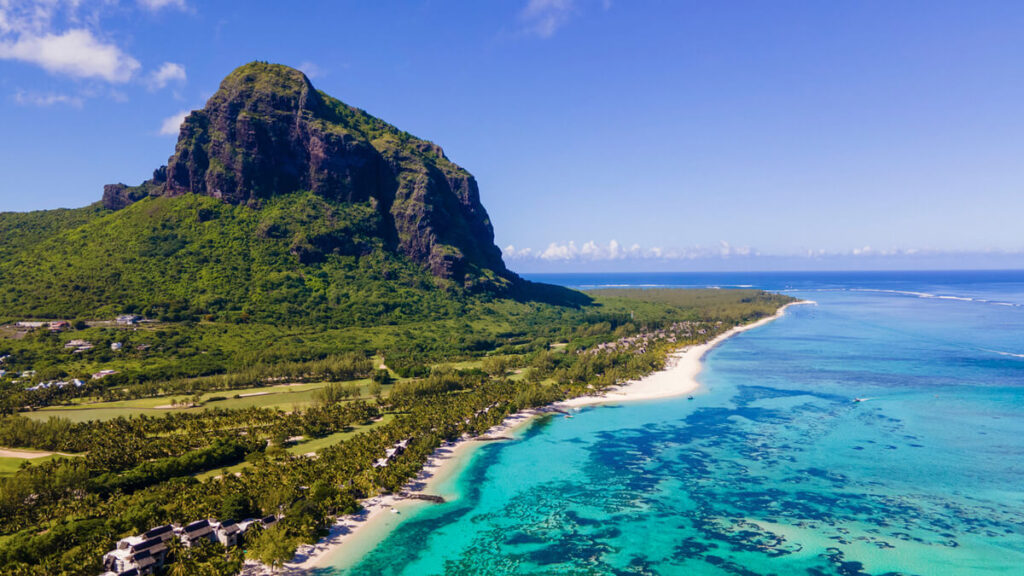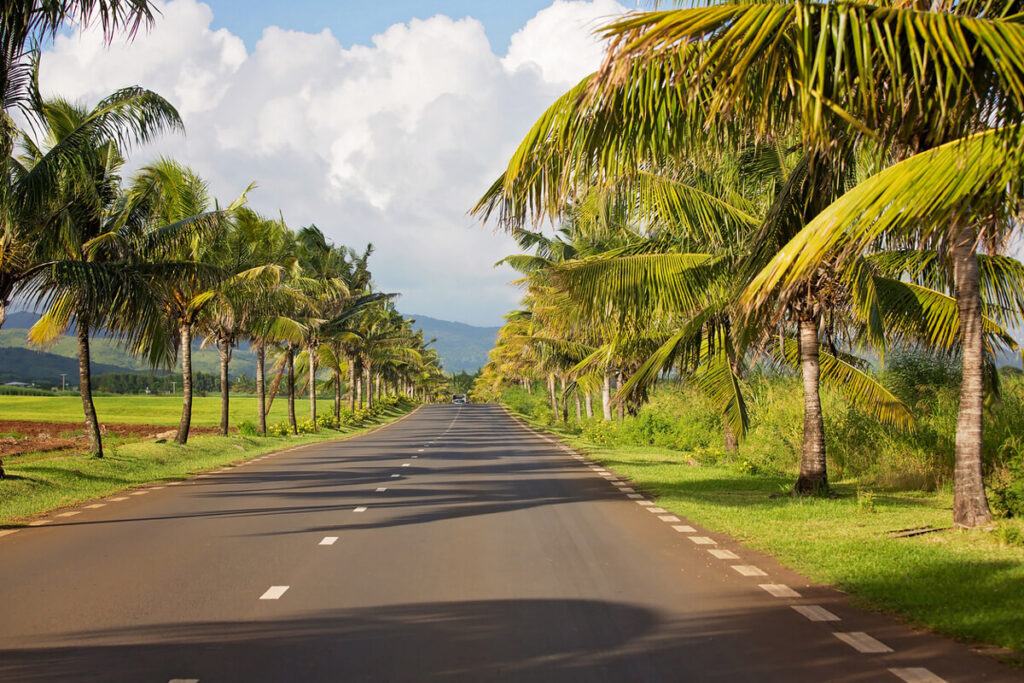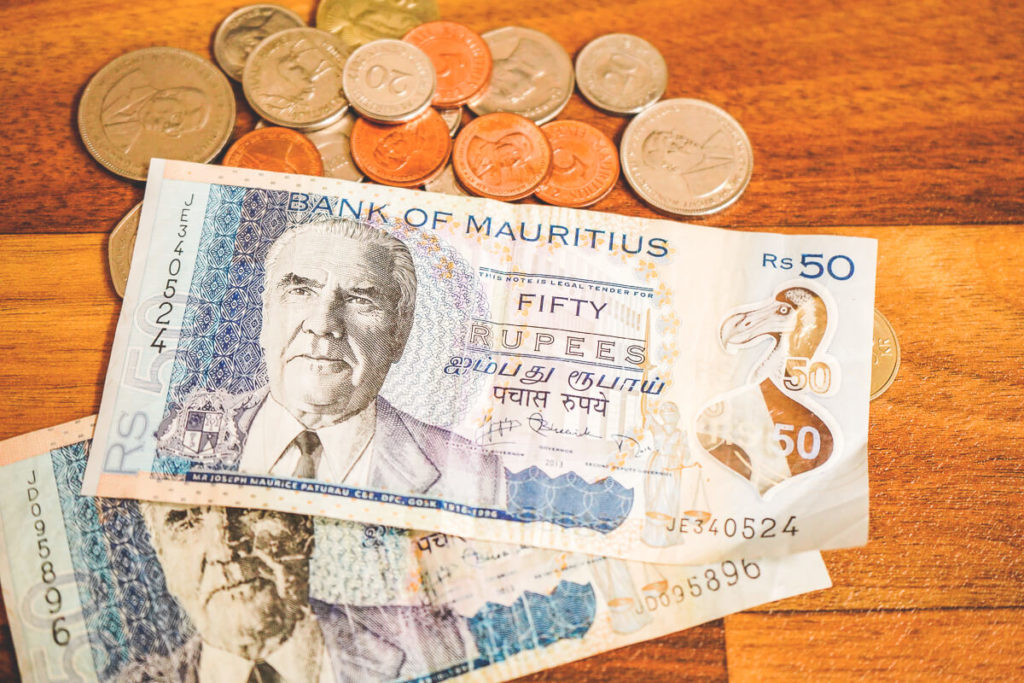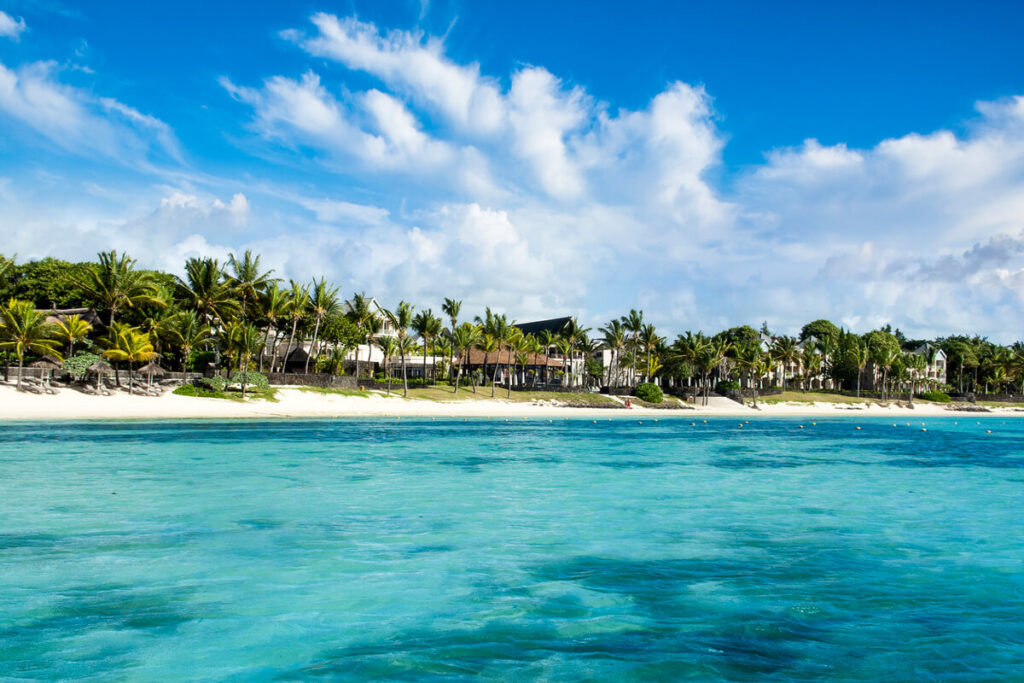Are you thinking about traveling to Mauritius, are just starting to plan your trip, and are looking for helpful travel tips for Mauritius? Then you probably already have countless questions in your head – questions like:
Do I need a visa to enter Mauritius?
When is the best time to travel to Mauritius?
♀️ Is Mauritius safe for tourists?
Do I need to get vaccinated before traveling?
Does it make sense to get a local SIM card?
How much do people tip in Mauritius?
Great that you’ve landed here! We’ve put together the best tips for Mauritius for you, based on our own experiences and travels. If you still have any questions, please write to us in the comments. We will help you as quickly as possible. And now: Enjoy browsing!
- 1. Why we like Mauritius!
- 2. Best time to travel to Mauritius
- 3. Time difference
- 4. Arrival & entry
- 5. Travel length
- 6. Itineraries
- 7. Rental car & left-hand traffic
- 8. Booking accommodation
- 9. Activities & excursions
- 10. Money & currency
- 11. Tips
- 12. Health
- 13. Travel insurance
- 14. Power adapters
- 15. SIM card for Mauritius
- 16. eSim for Mauritius
- 17. Travel budget & costs
- 18. Safety in Mauritius
- 19. Recommended Apps & Tools
- 20. Travel Reading & Travel Guides
1. Why We Like Mauritius!
Mauritius simply blew us away! We were originally only supposed to stay for two weeks, but it ended up being four months. The island has everything you could wish for: great weather, endless beaches, lush palm trees, delicious food, and incredibly warm hospitality. Add to that affordable accommodations, making it easy to stay longer.
Reasons to Travel to Mauritius
Dream Beaches: Mauritius is known for its beautiful beaches with crystal-clear water and white sand. Whether Trou aux Biches, Le Morne, or Blue Bay – here you’ll find great spots for relaxing and snorkeling.
Spectacular nature: The island offers an impressive variety of landscapes, from dense forests and waterfalls in the Black River Gorges National Park to the majestic Le Morne Brabant – perfect for our outdoor fans.
Cultural diversity: Mauritius is a melting pot of Indian, African, European, and Chinese influences. This exciting mix is evident everywhere – in the architecture, the festivals, and especially in the cuisine.
Water sports paradise: From kitesurfing in Le Morne to diving in Blue Bay – Mauritius offers the best conditions for water sports enthusiasts. But SUP, kayaking, parasailing, jet skiing, or submarining are also possible.
Exotic cuisine: Mauritian cuisine combines the best of different cultures – from spicy curries and fresh seafood to Indian snacks like dholl puri. We loved it!
♀️ Pure relaxation: Mauritius is the perfect destination to completely unwind. Many hotels offer luxurious spa treatments right on the beach – perfect for recharging your batteries.
Historical sites: Mauritius has a rich history. Highlights such as the UNESCO World Heritage Site of Aapravasi Ghat and the sacred Ganga Talao Temple provide insights into the island’s cultural heritage.
Good weather all year round: Mauritius offers a tropical climate and pleasant temperatures all year round. Even in the cooler months, it stays warm – ideal for a holiday whenever you want.
Romantic flair: Mauritius is a popular honeymoon destination for a reason. Private beaches, picturesque sunsets, and luxurious, top-class resorts create a romantic atmosphere for couples.

2. Best time to visit Mauritius
Mauritius is located in the southern hemisphere in the Indian Ocean, so the seasons here are the opposite of ours – but without the classic European winter. Instead, there is a distinction between a dry winter and a wetter summer. Mauritius can generally be visited year-round, but some months are particularly ideal for a visit.
The best time to visit Mauritius is between May and October/November. During these months, the weather is dry and warm, perfect for beach days and exploring. Temperatures are summery warm, and humidity is lower, allowing you to enjoy the best of the island – from relaxing on the beach to hiking through the lush green landscape.
- Summer & Rainy Season (November to April): Warm and humid with temperatures between 25 and 33 °C. This is also the cyclone season.
- Winter & Dry Season (May to October): Cooler and drier with temperatures between 18 and 25 °C. Less humidity.
3. Time Difference
Mauritius is in the UTC+4 time zone. This means that in the European winter it is three hours later and in the summer two hours later than in Germany. Due to the small time difference to Germany, jet lag on a flight to Mauritius is minimal. You actually get used to the local time quickly.
4. Arrival & Entry
Mauritius is located in the Indian Ocean and can be reached from Germany by plane. The island’s main airport is Sir Seewoosagur Ramgoolam International Airport (MRU) near Mahébourg. There are direct flights to Mauritius from Germany, mainly from Frankfurt am Main. Airlines such as Condor and Discover Airlines offer non-stop flights. The flight time is approximately 11 to 12 hours.
Alternatively, you can use connections with stopovers. Airlines such as Emirates, Turkish Airlines, or Lufthansa fly to Mauritius from various German airports with stopovers in cities such as Dubai, Istanbul, or Zurich. These flights are often cheaper, but they increase your travel time. Cost: from approximately €700 per person.
Entry: German citizens do not require a visa for tourist stays of up to 90 days. Your passport should be valid for at least six months upon entry. You must also be able to present a valid return or onward ticket. More information here: Entry into Mauritius.
5. Travel Length
Due to the longer flight, we recommend at least 10 days for a trip to Mauritius. Enjoy a few days on the beautiful beaches, such as Flic en Flac, Trou aux Biches, or Belle Mare. Then get a rental car or a driver and explore the island’s beautiful corners, such as the Chamarel Waterfalls, the Black River Gorges National Park, the botanical garden in Pamplemousses, or the Grand Bassin Temple.
A visit to the capital, Port Louis, is also a must. Stroll through the popular Central Market, explore the lively Caudan Waterfront, and visit the Blue Penny Museum. Tours to the surrounding islands, such as Ile aux Cerfs, Ile aux Aigrettes, or Ile aux Bénitiers, are also highly recommended.
10 days offers you plenty of time for a good combination of relaxation and exploration. If you want to take it easy, two weeks is even more relaxing, but there’s plenty of time for the most important highlights.

6. Travel Routes
Our Mauritius travel tips also include a few ideas for possible routes. If you want to explore the island on your own and not just stay in one place, we have put together three possible routes for you below (based on a 10-day trip):
1. Route: Highlights & Relaxation
- Days 1-2: Arrival and relaxation in Flic en Flac
- Day 3: Excursion to the Black River Gorges National Park (waterfall + 7-colored earth)
- Days 4-5: Stay in Le Morne – great beaches (hiking on Le Morne Brabant)
- Day 6: Day trip to Île aux Cerfs
- Days 7-8: Grand Baie – botanical garden in Pamplemousses + shopping in Port Louis.
- Day 9: Day at Trou aux Biches or Mont Choisy Beach
- Day 10: Departure.
2nd Route: Adventure & Culture
- Days 1-2: Arrival and first explorations around Flic en Flac.
- Day 3: Port Louis – Central Market, the Blue Penny Museum + Waterfront.
- Day 4: Botanical Garden in Pamplemousses and Château de Labourdonnais.
- Days 5-6: Black River Gorges National Park for hikes and Chamarel.
- Day 7: Île aux Bénitiers – with boat tour and dolphin watching.
- Day 8: Time for the east coast – Belle Mare for a quiet beach day.
- Day 9: Grand Baie or day trip to Île aux Cerfs.
- Day 10: Departure.
3. Route: Comfortable & Versatile
- Days 1-3: Relaxing beach days in Trou aux Biches or Belle Mare.
- Day 4: Visit the north – botanical gardens and a bit of shopping.
- Days 5-6: Adventures in Black River Gorges National Park and Chamarel.
- Days 7-8: Le Morne – hiking, kitesurfing, or simply enjoying the scenery.
- Day 9: Île aux Cerfs or Île aux Bénitiers for a final island tour.
- Day 10: Return and departure.

7. Rental Car & Left-Hand Driving
If you want to explore the island on your own, a rental car is a good option. There are numerous providers, both internationally renowned and local companies. It’s best to book your rental car in advance, especially during peak travel times, to ensure the best prices and availability.
Be sure to check the included services and the terms and conditions of the rental agreement, especially regarding insurance and mileage limits. Also, make sure you have a valid international driver’s license. This is officially required, even if often no one wants to see it.
Mauritius travel tips – the following services are recommended:
- All kilometers free
- Fair fuel policy (full/full)
- Comprehensive and theft protection with no deductible
- Glass/tire protection
- Underbody protection
- Liability sum: EUR 1,000,000
- Offer can be booked immediately
In Mauritius, traffic drives on the left, which means you drive on the left side of the road and the steering wheel is on the right side of the vehicle. This may seem unusual for many at first, but with a little practice, you’ll quickly get used to it. If you feel unsure, do a few laps around a large parking lot first.

8. Book accommodation
We’re often asked which region to look for a hotel in. Every region in Mauritius has its charm, but the west coast and the north are usually the most popular for a first visit. We’ve put together a few lists of the most beautiful hotels for you:
North of Mauritius: Grand Baie, Trou aux Biches, and Pereybère are the best spots for those who like it lively. Numerous restaurants, bars, and shopping opportunities await you here, especially in Grand Baie. Trou aux Biches beach is ideal for swimming and snorkeling – the calm waters and beautiful surroundings make it perfect for relaxing beach days.
West of Mauritius: Flic en Flac and Le Morne are a paradise for outdoor enthusiasts who enjoy being active and enjoy spectacular sunsets. The beaches of Flic en Flac are ideal for snorkeling and diving, while Le Morne Brabant and its hiking trails invite you to explore. A highlight for nature lovers is the Black River Gorges National Park – ideal for adventurers and nature lovers.
South of Mauritius: Bel Ombre and Blue Bay offer the perfect setting for anyone who wants to enjoy peace and nature. The region boasts wild coastlines and impressive nature reserves. The beaches are less touristy and often untouched – here you can experience nature up close.
East of Mauritius: Belle Mare and Trou d’Eau Douce are ideal for relaxing beach days and relaxation. This quiet area boasts beautiful hotels and resorts, as well as a perfect day trip to Île aux Cerfs. The beaches are stunning and the water crystal clear, although it can be a bit windier here, especially in the winter months.
9. Activities & Excursions
There’s an incredible amount to experience in Mauritius, and you can also discover much on your own. Nevertheless, there is a wide range of exciting tours and excursions that are truly worthwhile – from boat trips to Île aux Cerfs to guided hikes on Le Morne Brabant. Many people simply feel safer with a guide and in a group.
For popular activities like dolphin watching, helicopter flights, or day trips to Île aux Cerfs, it’s recommended to book in advance, especially during peak season, to secure your spot. Make sure to only book tours with established operators and check reviews on TripAdvisor or Google beforehand.
10. Money & Currency
The official currency in Mauritius is the Mauritian Rupee (MUR). Banknotes include 2000, 1000, 500, 200, 100, 50, and 25 rupees – they are colorfully designed and depict historical figures and symbols of the country. Coins come in denominations of 20, 10, 5, and 1 rupee, as well as smaller cent pieces of 50, 25, 20, 10, and 5 cents, which are useful for small purchases.
Credit cards are widely accepted in hotels, larger restaurants, shops, and for tours. However, smaller stores or street markets often only accept cash. ATMs are widespread on the island, especially in larger cities and tourist areas. You can easily withdraw money using international credit or debit cards (e.g., Visa, MasterCard).
When withdrawing money from an ATM, always choose to be billed in rupees. Otherwise, you will often get a very poor exchange rate. It is better to leave the conversion of your withdrawn amount to your bank. You can find a detailed article on this here: ☞ Mauritius Travel Tips – Everything About the Island’s Currency.

11. Tipping
In Mauritius, tipping is not mandatory, but is greatly appreciated. In restaurants, a tip of around 5-10% is customary, unless it is already included in the bill. For porters, you can expect to pay €1 per piece of luggage. Smaller amounts of €5-10 are also appropriate for other hotel staff (waiters, cleaning). Your taxi driver will also appreciate a small gift.
12. Health
Mauritius is considered a safe travel destination, including in terms of health. The island has well-equipped hospitals and clinics, particularly in and around the capital, Port Louis, and in tourist areas. Private clinics offer very good care, but are subject to fees. We therefore recommend travel health insurance..
There are no specific vaccination requirements for Mauritius. However, it is recommended to update standard vaccinations such as tetanus, hepatitis A, and, if necessary, hepatitis B. Malaria is not a risk on the island. Tap water is often drinkable in tourist areas, but we recommend playing it safe and preferring bottled water.
The sun in Mauritius is very strong. A high sun protection factor, a hat, and sunglasses are therefore important to avoid sunburn and sunstroke. Mosquitoes are present in some regions of Mauritius, especially during the rainy season. We therefore recommend good insect repellent for evenings outdoors (e.g., Peaceful Sleep).
13. Travel Insurance
Adequate coverage is essential, especially with regard to your health. We recommend taking out international health insurance for medical emergencies, hospital stays, and any necessary repatriation. Such insurance is available from around €10 to €20 per year.
Travel cancellation insurance can also be useful. It covers the costs if you have to cancel your trip due to illness or accident. This way, you won’t be left with cancellation costs if something comes up at short notice. You can find more information on this topic and an overview of well-known travel insurance providers here: The most important travel insurance policies.
Some well-known travel insurance providers:
- Allianz Travel*
- ADAC
- HanseMerkur*
- World Nomads
- Young Travellers

14. Power adapters
In Mauritius, the main electrical outlets used are type C (European standard plug with two round pins) and G (British plug with three rectangular pins). The mains voltage is 230 volts at 50 hertz, which is the same as in Germany.
If you bring devices with a type C plug, you won’t have any problems in many accommodations, as they often have these sockets. However, for devices with other plug types, or if only type G sockets are available, you will need a type G travel plug adapter: Order a power adapter for Mauritius*.
15. SIM card for Mauritius
If you want to stay connected during your stay in Mauritius, you should get a local SIM card. These are significantly cheaper than international roaming and offer reliable access to mobile data and telephony.
There are three main providers in Mauritius:
- Emtel: Offers special tourist SIM cards with generous data packages. For example, for around 750 MUR (approx. 17 USD) you get 200 GB of data, valid for 30 days. More info here.
- My.t (Mauritius Telecom): Also has attractive offers for tourists, including a 5G tourist SIM card with various data packages. More info here.
- Chili: The smallest provider with limited network coverage, therefore less recommended if you want to explore the entire island. More info here.
You can purchase SIM cards upon arrival at Sir Seewoosagur Ramgoolam International Airport. There are Emtel and My.t outlets in the arrivals area. Alternatively, you can find official shops of the providers in larger cities and shopping centers. You will need to present your passport to purchase, and the SIM card will be registered in your name.
16. eSim for Mauritius
There are now numerous providers of e-SIMs online. If your device supports them, you can save yourself the trouble of buying a physical SIM card. We’ve had very good experiences with the provider Airalo*.
In most cases, however, you can’t make phone calls with an eSIM; you can only surf the internet. In case of emergency, it’s always good to have someone to call (rental car company, accommodation, tour guide, etc.).

17. Travel Budget & Costs
Prices in Mauritius are relatively affordable compared to Europe, although costs vary depending on the region, accommodation, and activities. To give you an idea of the costs, here’s a rough overview.
For a 14-day trip in the mid-range segment, you can expect to spend around €2,000 to €2,500 per person. The actual costs will of course depend on your travel style – how often you eat out, book activities or stay in special accommodations.
A rough overview of the costs:
Round trip flights: 700 – 900 € per person
Accommodation: 70 – 100 € per night (mid-range)
Food & Drinks: €20 – €40 per day
Self-catering: €40 – €60 per week (supermarket shopping)
Rental car: €25 – €40 per day
Sights: €50 – €100 (national parks, museums, gardens)
Excursions: €50 – €100 (e.g. boat tours, dolphin watching)
♀️ Activities: €100 – €150 (e.g. diving, hiking, kitesurfing)
With this overview, you can plan your Mauritius budget well and enjoy a relaxing stay.
18. Safety in Mauritius
Mauritius is considered a safe island for travelers. The crime rate is relatively low compared to other African destinations, and serious crimes are rare. However, there are a few things you should be aware of:
Pickpocketing: As in most tourist destinations, pickpocketing can occur here, especially in busy areas or on beaches. It’s best to leave valuables in your hotel safe and only take the essentials with you.
Beach and Water: On less touristy beaches, you should pay attention to weather conditions and current warnings, as the sea can have strong currents seasonally. You should also avoid deserted beaches after dark.
Natural Disasters: Between January and March, Mauritius can occasionally be affected by tropical storms (cyclones). The Meteorological Office provides early warnings, and the island is well prepared. More on this here: Cyclones in Mauritius.
Health Safety: Mauritius is malaria-free and has good medical care, especially in larger cities and tourist centers. However, we strongly recommend travel health insurance.
We can only repeat it again and again: Use common sense. Ask at your hotel, at tourist information centers, or directly with the locals if there are certain places you should avoid. If a situation seems strange to you, just try to leave quietly and discreetly.
19. Recommended Apps & Tools
Want more Mauritius travel tips? We use various apps for our trips:
- MauritiusNow: Tips, interactive map, travel checklist, and much more.
- Booking.com: Find and book accommodation on the go.
- DeepL: Translation of text, speech, and even images.
- Komoot: Very useful for finding hiking trails and navigating.
- my.t weather: For current weather forecasts in Mauritius.
- XE Currency: Check current exchange rates and convert expenses into euros.
- Waze: Great navigation including information on construction sites, police checkpoints, potholes, etc.
20. Travel Reading & Travel Guides
1. DuMont Travel Guide Mauritius: This travel guide offers comprehensive information on the most important sights, culture, and history of the country. It includes practical tips on accommodations, restaurants, and activities. Add to cart*.
2. 111 Must-See Places in Mauritius: This book is a light read and highlights the island’s special features, its culture, and its people. Add to cart*.
3. Mauritius Travel Diary: 100-page travel diary for on the go. Capture your moments and plan your vacation with this book. Add to cart*.
We hope our travel tips for Mauritius have helped you plan your trip and that you are now well prepared for your island vacation. Enjoy your time in Mauritius, let yourself be enchanted by the beautiful beaches and welcoming culture. We wish you an unforgettable trip!